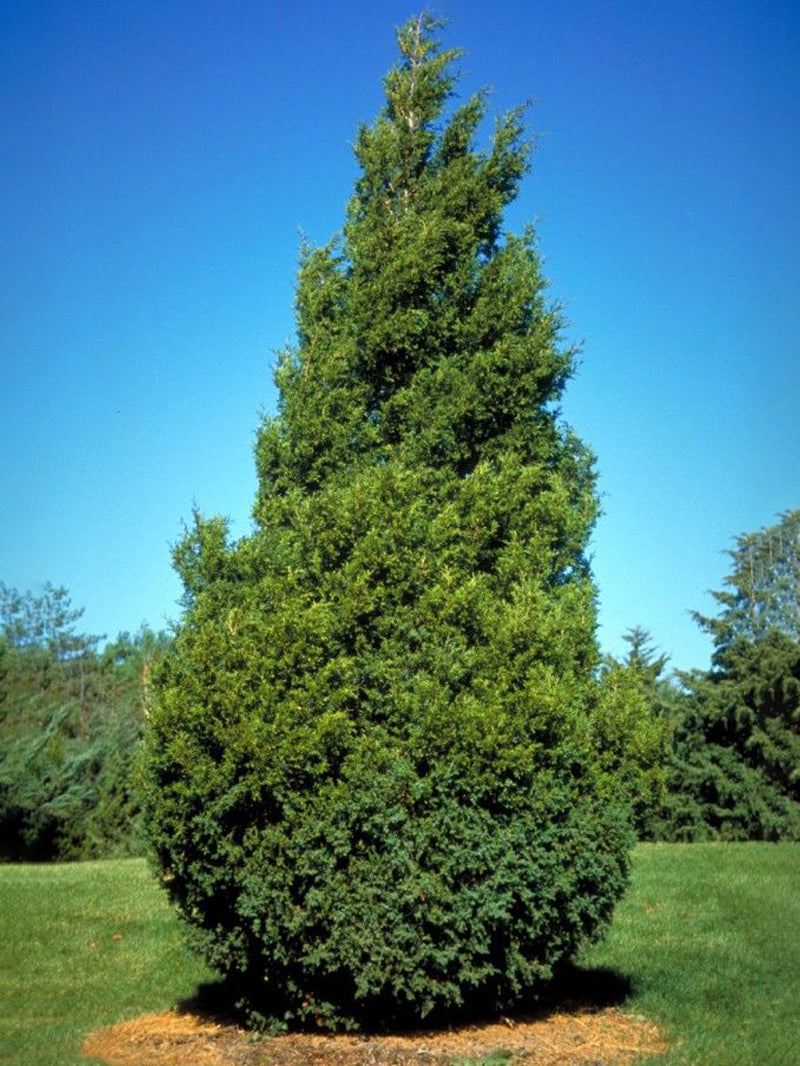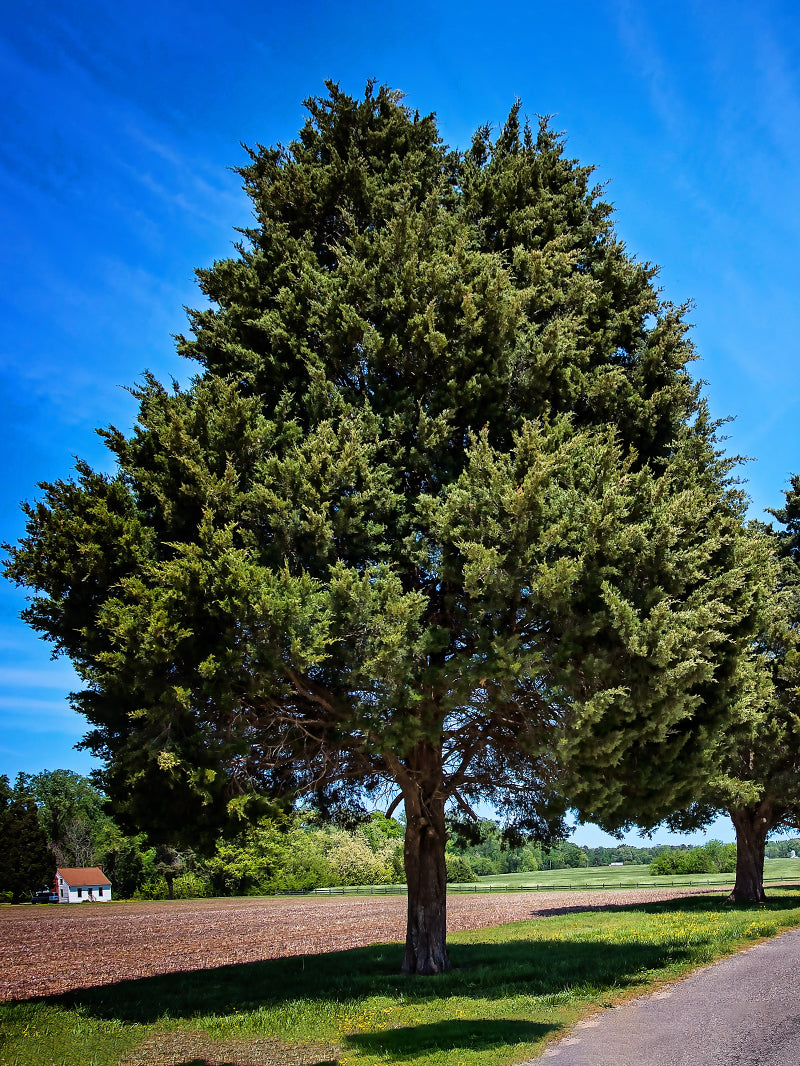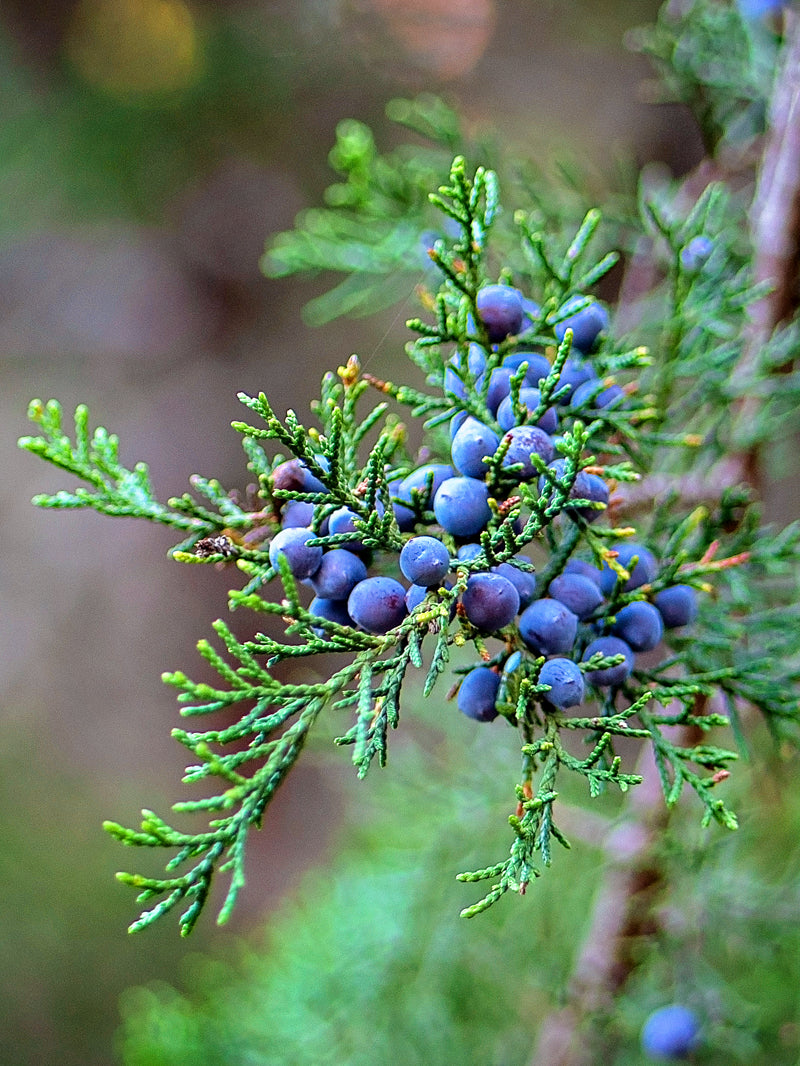Plant Quick Guide
Growing Zones:
Mature Height:
Mature Width:
Sunlight:
Spacing:
Growth Rate:
Does Not Ship To:
Cedar - Eastern Red
USDA Hardiness Zones: 2-9.
Description
The eastern red cedar tree is a common sight throughout most of the plains states and eastern United States due to it's versatility and cold hardiness, capable of growing in zones 2-9. It can be found on road cuts, in fence rows and scattered across abandoned fields—especially where limestone soils are present. It is an aromatic tree, with reddish wood giving off the scent of cedar chests and crushed fruit providing a whiff of the gin they once flavored.
Thanks to its tolerance of heat, salt, a wide range of soils and other adverse conditions, the eastern redcedar can be put to good use on the farm in windbreaks and in city landscapes for hedges, screens, clumps or even as specimen trees.
This is a shade tree, featuring a spreading canopy capable of blocking sunlight. It grows to a height of 40–50' and a spread of 8–20' at maturity.
USDA ZONES: Zone 2, Zone 3, Zone 4, Zone 5, Zone 6, Zone 7, Zone 8, Zone 9.
Shipping

At Plant Me Green we handle, package and ship the products you order with the utmost care. We ship your plants using FedEx Ground® the following business day after you have completed checkout.
We are now offering $15 flat rate shipping for all tree orders! Replacement tree shipping cost will be $15 per box. We still cannot ship to some states and US territories based off the Agricultural Laws that may be in place. Please see below for all exclusions.
If you have any questions concerning transit time for your order, please feel free to contact us at info@plantmegreen.com or toll free 855-817-5268.
Trees: Due to strict Agricultural Laws in place, we currently cannot ship to the following states: Alaska, Arizona, California, Hawaii. We cannot ship to Puerto Rico or international.
How to Plant

STEP 2) Once you've located the perfect spot, the hole you are digging must be at least double the width and as deep as the root system you are planting.
STEP 3) Remove the plant from the pot and place the root ball in the hole. The top of the root system should be level with the ground. Before placing the tree or shrub in the hole, use your hands to gently break up the root system.
STEP 4) Once the plant is in place, backfill the hole with native soil and any leftover potting material.
STEP 5) Pack down the soil to eliminate any air pockets.
STEP 6) When finished, water thoroughly.
Care Guide










